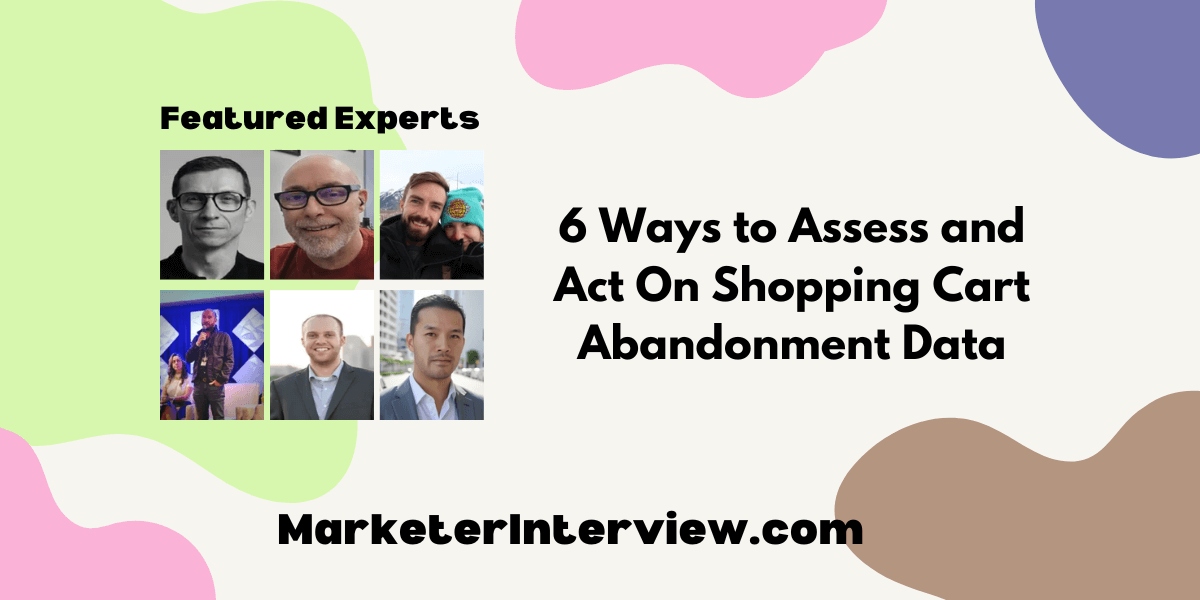6 Ways to Assess and Act On Shopping Cart Abandonment Data
In the quest to convert abandoned carts into sales, we’ve gathered insights from six industry experts, including Directors and Founders. From deploying personalized email recovery campaigns to analyzing abandonment points for actionable insights, discover the specific strategies these professionals recommend for tackling shopping cart abandonment.
Want to get quoted in MarketerInterview.com content just like this? Apply to become a contributor today!
Contents
Deploy Personalized Email Recovery
A powerful approach is to use personalized email-recovery campaigns. Collect email addresses early in the checkout process and send timely, customized emails to users who abandon their carts. These emails should remind them of the items left behind and include incentives like discounts or free shipping to encourage them to complete the purchase. Tools like Klaviyo or Mailchimp can automate this process and segment users based on their behavior for more effective targeting. Analyzing the open and click-through rates of these emails can provide insights into what incentives work best, allowing for continuous optimization of the recovery strategy.

Marc Bishop, Director, Wytlabs
Send Tailored SMS Offers Quickly
One strategy I’ve used with success is sending personalized SMS offers within 30 minutes of a customer abandoning their cart. We analyze what products they left behind, then text a tailored discount code for just those items. The tight window creates urgency, while the customized offer makes the customer feel valued.
For example, with one client, a sporting goods retailer, we offered 15% off within an hour of abandonment and converted 22% of those carts. The key is balancing personalization and incentive. An offer that’s too small or too broad won’t motivate the purchase. But go too big, and you cut into your margins substantially.
SMS allows instant, targeted outreach. The right message, offer, and timing have helped us recover 15-30% of abandoned revenue each month for e-commerce brands. Other businesses can apply this, but know your customers. An eco-brand may focus the offer on sustainability or social good. A premium retailer may drive urgency through scarcity or exclusivity. The perfect mix of personalization and incentive is unique to every brand and audience.
With cart abandonment over 60% for most stores, fast, tailored recovery campaigns can significantly impact your bottom line. Give SMS cart abandonment a try – when done right, the returns are very rewarding.

Devin Zander, Founder & CEO, Skup
Sequence Follow-Up Reminder Emails
Implementing a follow-up email sequence for cart abandoners is highly effective. When someone leaves items in their cart, sending a reminder email within a few hours, followed by a second one offering a small discount or free shipping after 24 hours, can entice them to complete the purchase. Tracking these emails’ open and conversion rates helps refine the approach, ultimately reducing abandonment rates and recovering lost sales.

Thomas Petrelli, Founder, Estates Done Right
Optimize Checkout by Device Type
Segmenting abandoned-cart data by device type can reveal critical insights. If mobile users frequently abandon carts, optimizing the mobile checkout experience can be key. Simplifying the mobile interface and ensuring a seamless, fast-loading process can dramatically reduce drop-offs. Picture a streamlined mobile checkout that leads to fewer abandoned carts, capturing sales that might have been lost due to a poor mobile experience.

Ryan Doser, Co-Founder, AI Insider Tips
Create Urgency with Scarcity Tactics
We foster a sense of urgency and scarcity among our customers. We create a heightened awareness of limited product availability or time-sensitive offers, and encourage customers to complete their purchases before they miss out on the opportunity.
We might display real-time inventory levels for our most popular cabinet models, or introduce limited-time sales and promotions with clear countdowns. This helps to instill a fear of missing out and motivates customers to finalize their orders before the deal expires or the desired product sells out.
Striking the right balance between creating a sense of urgency and maintaining a positive customer experience is crucial, as we don’t want to come across as overly pushy or manipulative.

Josh Qian, COO and Co-Founder, Best Online Cabinets
Analyze Abandonment Points and Act
We use a specific strategy to handle shopping-cart abandonment. We review the data to see at which point users are leaving. This helps us identify any issues. For example, if many users leave during the payment stage, it might indicate a problem with our payment process. We then take action by sending automated emails to remind users of their abandoned carts, often offering a discount or free shipping to encourage them to complete their purchases. This strategy has helped us recover many sales and improve our checkout process.

Shane McEvoy, MD, Flycast Media
Want to get quoted in MarketerInterview.com content just like this? Apply to become a contributor today!






